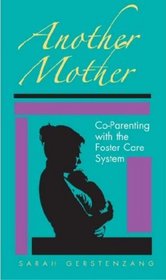Search -
Another Mother: Co-Parenting with the Foster Care System
Another Mother CoParenting with the Foster Care System
Author:
One night after midnight social workers brought a baby girl to the author's;home, and her life as a foster mother began. A social worker;herself, Gerstenzang discovered that raising Cecilia, deespite all the personal joys, would be a complex and frustrating;process of “co-parenting” with the foster care system in New York City.;Foster ... more »
Author:
One night after midnight social workers brought a baby girl to the author's;home, and her life as a foster mother began. A social worker;herself, Gerstenzang discovered that raising Cecilia, deespite all the personal joys, would be a complex and frustrating;process of “co-parenting” with the foster care system in New York City.;Foster ... more »
ISBN-13: 9780826515490
ISBN-10: 0826515495
Publication Date: 3/19/2007
Pages: 224
Rating: ?
ISBN-10: 0826515495
Publication Date: 3/19/2007
Pages: 224
Rating: ?
0 stars, based on 0 rating
Publisher: Vanderbilt University Press
Book Type: Paperback
Members Wishing: 1
Reviews: Amazon | Write a Review
Book Type: Paperback
Members Wishing: 1
Reviews: Amazon | Write a Review
Genres:
- Health, Fitness & Dieting >> Relationships
- Parenting & Relationships >> Adoption
- Parenting & Relationships >> Family Relationships
- Parenting & Relationships >> General
- Nonfiction >> Current Events >> Poverty >> Social Services & Welfare
- Nonfiction >> Social Sciences >> General
- Nonfiction >> Social Sciences >> Social Work




